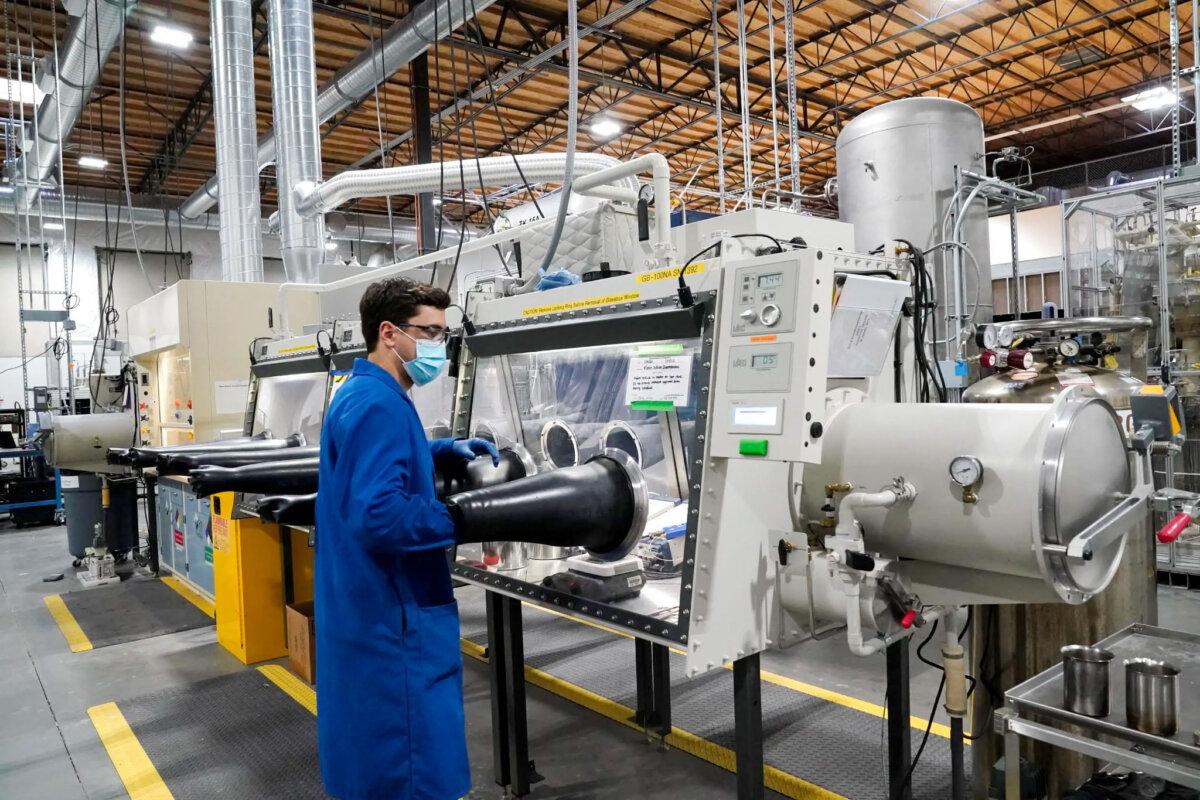The “democratization of nuclear power” on the horizon makes international regulators wonder whether licensing can be streamlined without compromising testing.
“We’ve been telling us for years that nuclear will play a substantial role if many countries meet the objectives that many countries have set for themselves to reduce CO2 emissions,” he said.
But within five years he said, “We’re going to see a kind of democratization of a nuclear power plant. We could see nuclear power plants in Kenya, the Philippines, Indonesia, countries that have not actually had this before.”
$300 billion is a shortage nurtured by the initially sought-after $1 trillion advocates, fostered by the perception that many countries are not meeting their decarbonization goals and that they are not building the grid they need to meet the growing demand for electricity.
During COP29, “countries were expected to raise plans to show how they had already reached their target,” Magwood said.
The shortage is “a bit shocking for some policymakers,” he said. “But behind the scenes, when I visited with the Minister of Energy and other officials from different capitals, they admitted to me that I had no idea how these targets would meet.”
Jane Nakano, senior energy security fellow at the center, said in addition to decarbonisation, support for nuclear revival is driven by concerns about interest in stabilizing electricity costs to promote energy security and economic development.
“The war in Ukraine was a game changer as it reaffirmed what many countries consider their prime objectives today and guaranteed energy security,” Magwood agreed.
He said that after more than 60 years of globalization, “energy security has kind of disappeared from international debate.
“But,” Magwood added, “it’s back and it’s back in vengeance.”
On October 10, 2024, a closed three-mile island nuclear power plant stands in the middle of the Susquehanna River near Middletown, Pennsylvania. ChipSomodevilla/Getty Images
However, most nuclear reactors were built between 1970 and 1990, and on average have been in service for over 40 years. Since 2016, the only newest thing to come online in the US is Georgia’s Vogtle’s fourth reactor, with a budget of $16 billion and a delayed schedule in six years.
This is a common scenario around the world, with Magwood and former president of the US International Atomic Energy Agency, Laura Holgate, said many of the world’s nuclear power plants are decades old.
Nakano said the “very ambitious” goal of tripling nuclear energy around the world would require the construction of up to 50 nuclear reactors per year.
Not only is it possible, but Magwood said, it was done.
“In the ’70s and ’80s, the build (rate) at the time is what we need now to triple by 2050,” he said.
The biggest obstacle is industrial rust, Magwood said.
“The challenge is that we don’t have the same infrastructure that we went back to the ’70s and ’80s,” he said. “There aren’t many companies building nuclear power plants today. So there’s no supply chain. There’s no staff. In some cases, they don’t have the regulatory infrastructure to do this.”
All this could be changing.

Test engineer Jacob Wilcox will pull his arm out of the glove box used to process sodium at Terrapower, a company that develops and builds a small nuclear reactor in Everett, Washington, on January 13, 2022. Elaine Thompson/AP Photo
100 years of certainty
Advanced reactor designs, including portable small reactors, are on the forefront of being commercially available, with demonstrations and prototype deployments completed.
These new reactors are mass-produced and “internalized the current state of knowledge,” allowing them to increase efficiency at a lower cost, Holgate said.
“That’s not the past,” Magwood said. “Nuclear power has always been a one-off thing. You build it here and leave for 10 years. You build it there and leave for 20 years. It’s always kept very expensive.”
However, the production of mass reactors with standard features significantly reduces costs and nuclear energy grows rapidly, he said.
“If you really want to cut costs, then there’s a big market, continuous manufacturing, and you’re really in business,” Magwood said.
Magwood says virtually every utility-scale nuclear power plant built over the next 20 years will use modern technology, noting that his agency is tracking over 90 emerging nuclear technologies.
He doubts some will go into the demonstration phase. “We’re going to see Darwin come into effect here. There’s no 90 technology when the smoke is clean,” he said.
Magwood said there is concern about ensuring unified safety and environmental standards with small, mass-produced portable reactors that are likely to be used within decades as plug-in systems that do not require the expertise of home and business users.
“We’re talking about the small modular furnaces we see in far more facilities than in the past,” he said. “This is going to change the photos of the testing community. It’s not necessarily technically difficult, but it could be a capacity issue.”
Holgate said mass production allows inspections to be quicker to checklists, cites the International Atomic Energy Agency’s “milestone process” as an ongoing attempt to streamline reviews, permits and licensing.
The programme is about a very clear, step-by-step process. How can we enable a procurement approach to be developed from our very limited regulatory and management capabilities regarding nuclear power?
Magwood said that most European members of the Economic Co-operation and Development Agency have extensive experience in operating nuclear power plants, so his agency provides consultant services to “newcomers” nuclear energy countries.
“It’s very important that (the International Atomic Energy Agency) do it in the ‘milestone process’,” he said. “What we’re trying to do in the country is to tackle policy and economic development.”
“Newcomers” development of joint innovation sharing relationships with nuclear energy countries “will become very important,” Magwood said.
“That will also be true in the future,” he said. “You’re going to see this kind of relationship (because whenever a country decides to build a nuclear weapon, its partner has been holding hands with them for 100 years.













